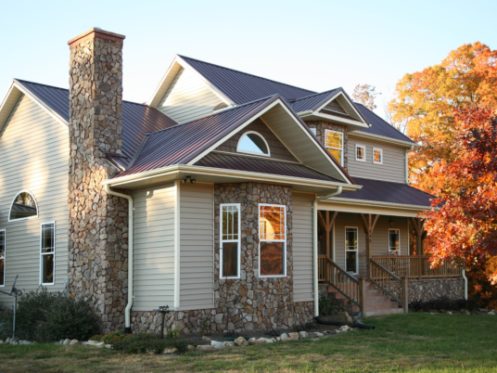It’s that time of year again! The leaves are changing color, the air is crisp, and you can smell the pumpkin spice latte a mile away. It’s fall, which means raking the leaves and getting your home and yard prepared for colder days.
Fall is the time of year when everything changes to welcome the new season. Summer clothes and BBQ grills are put away in preparation for the cold weather that is coming. Winterizing your AC unit is another step in the process of preparing for winter that will help keep your unit in good shape for the spring. If you skip this step, you could be looking at a hefty bill next year when you need to get it serviced or replaced.
Why This Is Good Advice
Although you love the changing of the seasons, your AC doesn’t. Cold weather isn’t good for your cooling system. Extreme cold weather can cause condensers to freeze, which can lead to expensive repairs. It’s important to protect it from rain, snow, and ice while it’s not in use.
If you don’t prepare your AC unit for winter, you could be in for some costly repairs when it comes time to turn your unit back on in the spring. There are some precautions you can take to make sure your unit stays in good shape through the cold months.
Here are eight tips for getting your AC ready for winter.
1. Turn the Unit Off
The first step is to turn off the power to your air conditioner. Most AC units have a switch in the electrical box that is located on the outside of your home. You may also have an electrical switch inside your home, as well. It’s usually a red switch. Just flip it to the “Off” position. You don’t want it accidentally turning on if you have an unusually warm winter day.
2. Set the Thermostat to Off
Set the thermostat to the “Off” position during the winter months. You may have a furnace and air conditioner that are controlled by the same thermostat. If that is the case, slide the tab from “Cool” to “Heat” or “Off.”
3. Change Your AC Filters
Air conditioners produce a lot of dirt, debris, and allergens that can clog up the air filter. Over time, the filter becomes less effective at removing these particles from the air, which can cause increased dust buildup in your home. Changing your AC filters every three months helps keep your furnace running efficiently and keeps allergens out of your living space. You may need to change the filters more often if you have pets or smokers in the house.
4. Clean Around the Base of the Condenser
Clean around the outdoor unit. Use a broom or a leaf blower to clear away any leaves or other debris that may have accumulated around the outdoor equipment.
Using your hose, spray down the area around your unit to remove any dirt or debris. You will see the dirt flow down the sides as you point the sprayer upward close to the vents. It may take some time to get it all out, but it’s worth the effort to know your condenser is clean and ready to go for the next season.
5. Cover It
There is some debate over whether this step is necessary. If your condenser is covered by a roof overhang, then you shouldn’t worry about anything falling on it. If you want to cover it, use a tarp, mesh cover, or piece of plywood with a brick placed on top.
Covering the top of your unit can help prevent damage caused by rain, snow, and ice if the equipment is open to the elements. It is not recommended to cover the entire unit though. Enclosing the unit during cold weather might seem like a good idea, but it traps moisture inside and encourages animals like squirrels to nest in the shelter.
Instead, cover only 6 inches from the top so it still gets airflow through the system. The cover should be just large enough to cover the top of the unit to protect it from falling icicles.
6. Brush Away Snow Accumulation
Check the outdoor unit frequently for snow and ice accumulation. Make sure the plywood or tarp hasn’t blown off, and brush away any new snow. If the condenser coils get covered with ice, the metal parts inside can rust. The best way to prevent this is to occasionally brush off any snow or ice buildup with a soft-bristled brush and keep the unit covered.
7. Clean Around the Indoor Unit
Remove any dust and dirt that may have accumulated around the front of your indoor unit by using a vacuum cleaner with a hose attachment on it. Go over the vents, under the corners, and anywhere else you see dust.
Wipe down the outside of your unit with a solution of warm water and vinegar. This will remove any dirt or grime that may have accumulated on your unit while it was in use.
8. Schedule a Maintenance Service
Schedule a winter tune-up. Before the first frost, contact HVAC professionals like ours at Thermo Direct.to perform a thorough inspection of your air conditioning system. One of our NATE-certified technicians will check all components of your system and provide recommendations for seasonal maintenance. A professional inspection will also alert you if there are any issues with your system before they get worse in winter conditions.
FAQs About Winterizing AC Units
1. Is it good to cover your air conditioner in the winter?
It’s not necessary to cover your air conditioner completely in the winter months. If you’re concerned about snow or ice accumulating on top of it, then covering it will help protect against water damage. Just make sure there is enough ventilation to allow air to pass through the system.
2. Does a mini split need a cover?
If you have a mini-split system that is outside of your home, you don’t necessarily need to cover it for winter. However, if there is any chance of freezing temperatures that could cause damage to your unit, you should consider covering it, especially if it will not be in use. Flexible covers keep snow from building up on top of the unit and can be obtained from home and garden stores.
3. When is the best time to winterize?
It’s best to winterize your air conditioning unit in the early fall just before closing the windows and turning on the heat. Choose a sunny day to get your AC ready for winter.
The key to keeping your central air conditioning system in good condition is to have it properly maintained. This means having the system inspected, cleaned, and repaired by a licensed HVAC professional every spring and fall.
Keep your HVAC system running smoothly with seasonal maintenance. At Thermo Direct, we take your comfort seriously. We have been serving customers in Raleigh and Durham, NC for 30 years. We offer HVAC maintenance, repairs, and installations as well as indoor air quality services to keep your home comfortable all year long. Contact us today to schedule your next maintenance service.







